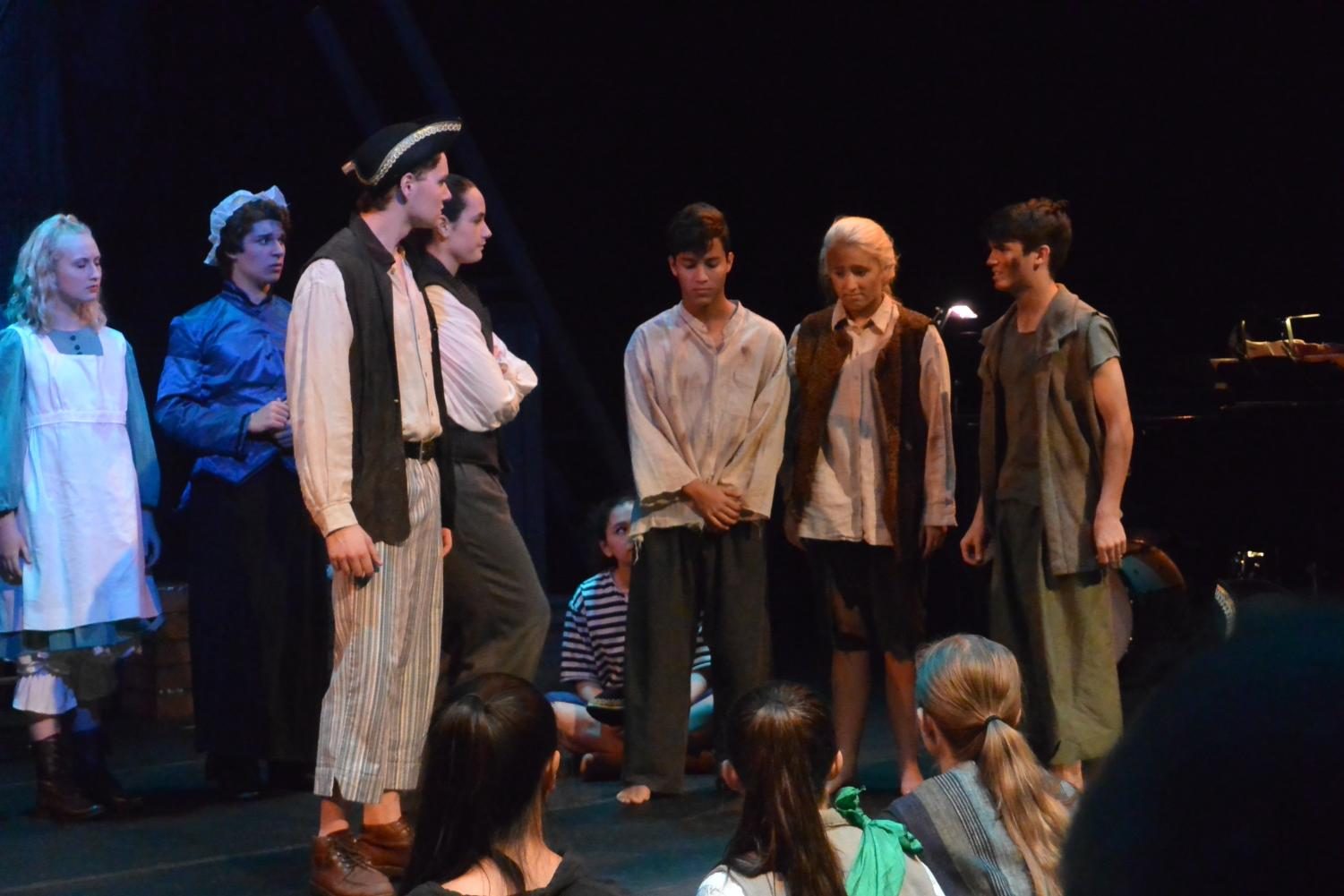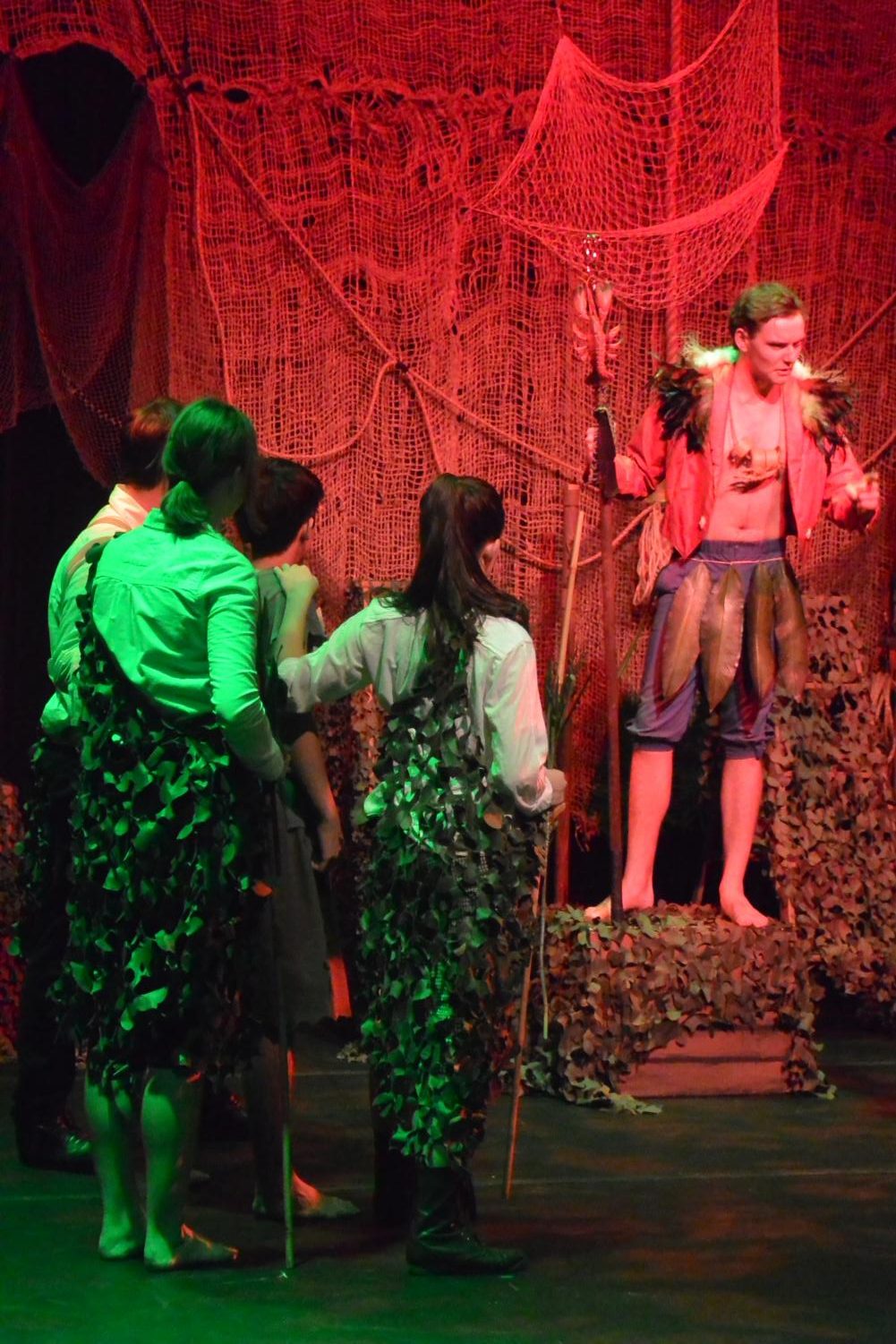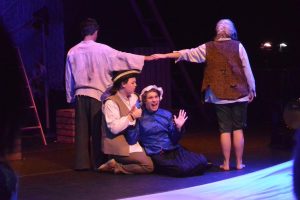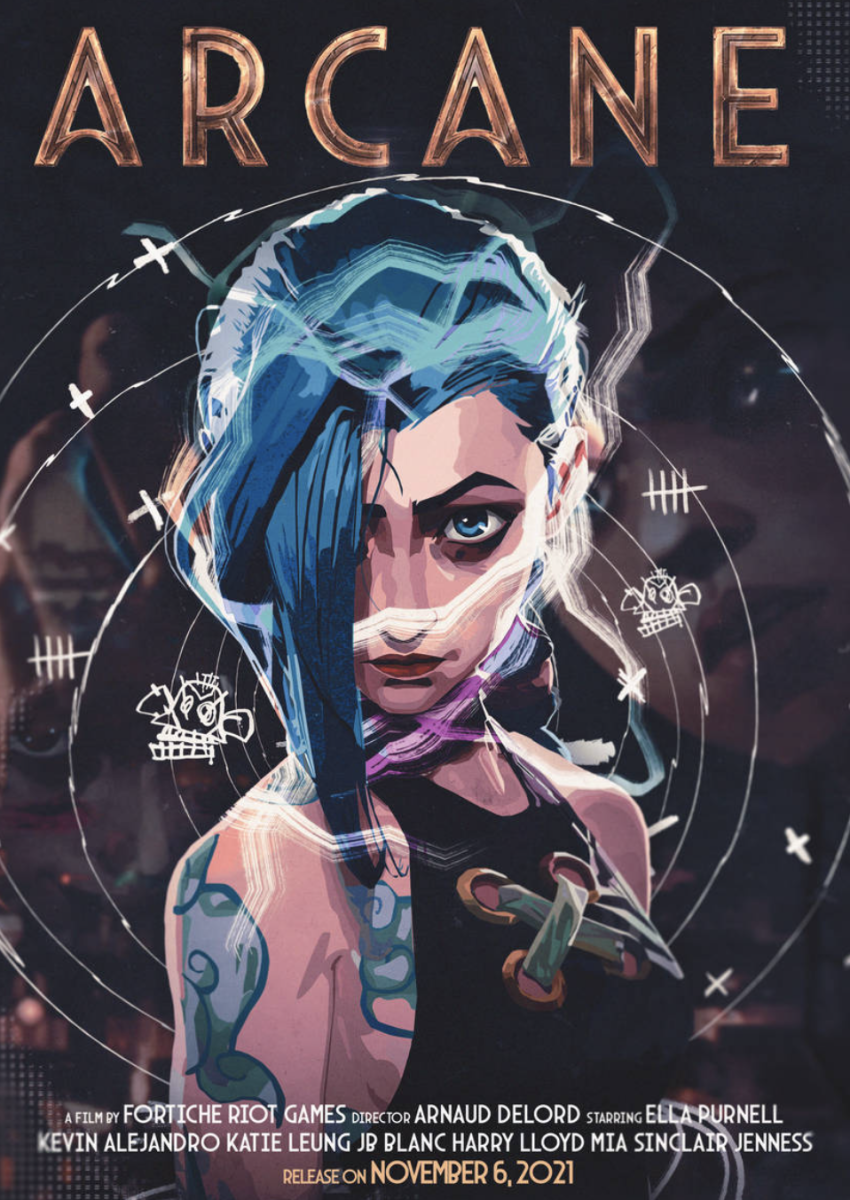Americans are nothing if not Anglophiles: our love of J.K. Rowling’s literary works convinced Universal to open the Wizarding World at Universal. The royal wedding of Prince William was watched by over eighty million of the United States—that’s nearly a quarter of the population. I believe Walt Disney was an influencing factor on our love of Britannia. Among his adaptations based on literature from the United Kingdom is Scotsman J.M. Barrie’s Peter Pan. This timeless classic about a boy who refuses to grow up, his troupe of Lost Boys and the Darling children charmed comedic writer Dave Barry into crafting a prequel to the Neverland adventures, Peter and the Starcatcher.
The plot followed Molly Darling, the future mother of the Darling children from the animated film. With the aid of her father, they attempted to protect “starstuff:” Junior Carly Swain portrayed the character as naive due to her privileged life, yet calm in the face of paradoxical situations. Leonard Aster, her father, was acted confidently by freshman Thomas Lightsey. Although he served more as a plot device than a caring parent, Lightsey managed to evoke responses of anger, shock and relief. Molly was (semi-negligently) cared for by Mrs. Bumbrake, a nanny played by sophomore Joshua Lefkowitz. Dressed up in a gown and bonnet, he executed the accent and manner of a governess with brilliant timing and delivery.
“When I was told I would be playing a female role, I was so excited,” Lefkowitz said. “I fell in love with the character and the script in general from the moment I read it.”
While his adoration is apparent, the role was a difficult one. Brambrake’s dialogue was littered with alliteration, and Joshua had to contend with a quick costume change:
“In the second half, I had to hoist up one end of a prop in a scene,” Lefkowitz said. “Then, [senior] Ashleigh Avallone had to help me into a mermaid outfit. I wouldn’t have minded the costume, but I had to climb a flight of stairs without being able to move my legs. After I delivered some dialogue to Peter, I had to hobble backstage to change back into Madame Bumbrake quickly, since the next scene I had to be back on the stage. It took a lot of practice to get right, but it was worth it.”
Lefkowitz’s humorous character was paralleled by senior Hannah Mosher, who captured Mrs. Bumbrake’s heart with her portrayal of the crew hand, Alf.
“Hannah and I loved performing together,” Lefkowitz said. “The musical was our first real time working in tandem. We goofed off all the time, but worked hard too.”
Supporting Peter Pan were two of the first Lost Boys, Ted and Prentiss, played by Avallone and sophomore Benji Santiago respectively. Avallone’s schtick was her running joke of ceaseless hunger, while Santiago’s sense of arrogance and confidence worked well with his character’s need to constantly be in control of the others. Sophomore Nick Bergman was commendable in his portrayal of the dejected orphan who learns to become the carefree rascal, Peter Pan.
Our antagonists were represented by three factions: the crew of the ship the Neverland, Black Stache and his piratical mates, and the aborigines of the island set to become the center of the Disney work, the Mollusk Tribe. Bill Slank, played by senior Jonathan Gant, played up the cliché of British coldness and punishment of youth by brandishing his slower crew members. In the second half, Gant adopts a stereotypical Italian accent for the role of Fighting Prawn. Junior Olivia Miller plays his son Hawking Clam, and their combined chemistry and sense of comedic timing was impeccable. Senior Valerie Trapp plays Black Stache, the self-centered pirate captain of his ship, the Wasp.
Taking place in Trinity’s Freitag and Falk Theatre, the musical’s set design was very cozy.
“The black box offers an intimacy and a connection to the story that the auditorium does not,” director Janine Papin said. “In both though, I try to create stage ‘pictures:’ balance, symmetry, tension, shape, levels; all play a part in my direction.”
Many items from one scene were left at the perimeter of the area in scenes where they were not needed. Papin elected to use other cast members as props and structures.
“This play is considered ‘story theater,’” Papin said. “That type of theater is presented by an ensemble group of actors that step in and out of playing different characters, creating an environment, and narrating the story. It relies on the use of a few props used creatively, and the audience’s imagination.”
Indeed, the proximity the audience and action shared created a sense of investment and wonder which I think would have been more difficult to establish from the raised and removed platform of the larger, traditional stage. Being so close to the talented actors and actresses, I felt directly dictated to during asides and saw the effort and thought that went into details like facial expressions and posture which I would not have perceived even sitting in the first row in the auditorium.
The play featured a live pit band comprised by sophomore violinist Ethan Schenck, percussionist Rachael Pisarski ‘17, and our pianist Patrick Nugent.
The costumes of the work ranged from simple green rags worn by Peter to the outlandish garb of the Mollusk people, but all were appropriate for their purposes in the story. Lighting in the play was well done, employing a full spectrum of color, using traditional lights as well as battery-powered necklaces which shone radiantly when Wendy and her father were in trouble.
Peter and the Starcatcher told a story of boys who rose above their predisposed positions in life, starting as the most dejected and isolated of slaves and ending up free and without a care in the world, thanks mostly to their cooperation as a unit. In the end, it wasn’t any starstuff which saved the group from their numerous parallels: it was their teamwork.

































